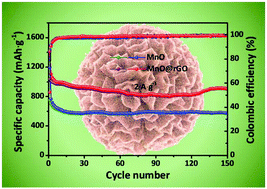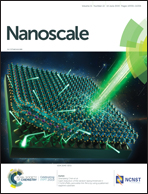MOF-derived manganese monoxide nanosheet-assembled microflowers for enhanced lithium-ion storage†
Abstract
Achieving high energy density, power density and cycling performance is a great challenge for lithium-ion battery (LIB) anodes. To obtain favorable electrochemical properties, an effective approach for designing composite nanomaterials with good stability and large specific surface area has been reported here. In this work, metal–organic framework (MOF)-derived manganese monoxides with a stable macromolecular framework were synthesized by utilizing the template agent 1,2,3,4-butanetetracarboxylic acid (BTCA) and the organic salt manganese acetylacetone, which possess a compact microflower structure assembled by nanosheets. As a synergistic effect, not only the amorphous carbon derived from MOFs enhances the specific capacity and stability, but also the unique nanosheet exhibits a significant nano-effect and high areal capacity, which is in favour of an electrochemical reaction. For further enhancement of the electrochemical performance, reduced graphene oxide (rGO) was introduced. When tested as a LIB anode, the MnO@rGO composite displays superior reversible capacities (1716 mA h g−1 at 0.1 A g−1 and 930 mA h g−1 at 2 A g−1) and remarkable rate performances. The research results of the composite nanomaterials lay a foundation for the fabrication of high-capacity and stable anode materials in LIBs.



 Please wait while we load your content...
Please wait while we load your content...